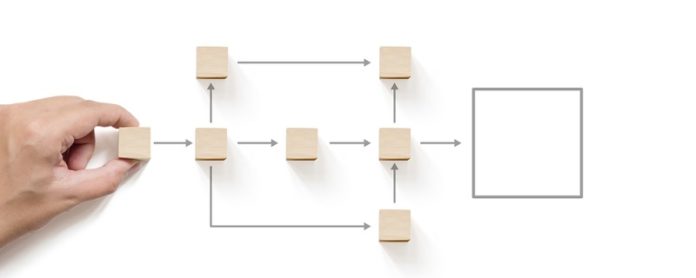The U.S. economy is in full growth mode, and though it’s a welcome time for business owners, many businesses are adjusting to growing pains with new, long-term remote and hybrid work environments. Now is the time for businesses to re-examine workflows to ensure agility and productivity is maintained and that employees remain engaged and motivated.
A few fundamental principles are proving optimal for success in remote and hybrid work environments.
Asynchronous workflows
Adopting asynchronous workflows is not new, but it has become more important now that top talents are searching for flexible work environments as the world opens back up. To be effective at working asynchronously, colleagues must be able to manage projects, communicate well and collaborate on documents in a virtual environment.
The key is eliminating friction within the workflow by streamlining collaboration with the right tech stack.
Project management solutions like Jira and Confluence work well, especially when they are used for specific purposes. For example, Jira is a powerful agile management tool where tasks can be assigned and kept track of projects. Confluence is a great collaborative workspace tool that allows teams to work together with ease in asynchronous and synchronous workflows.
Google’s G-Suite offers seamless collaboration in documents where multiple people can edit files at once and at different times without multiple versions needing to be saved and referenced.
Regular opportunities to connect in real-time
While asynchronous workflows are critical to helping teams get work done, live communication and connection are just as critical to keep teams engaged and motivated.
One of, if not the biggest missing elements to remote and hybrid work is the ability to connect with colleagues. In the office environment, this typically happens through casual conversations.
One way to combat the disconnect is to host regular virtual “watercooler” meetings, where people are encouraged to laugh and simply get to know one another.
Some of these virtual hangouts can be optional, while some should be required. All meetings require intentional and strategic planning from management centered around employee engagement.
At BEE, the development team has a daily designated watercooler-style meeting coined, “Social & Share Time” where employees discuss both personal and professional topics. Another type of meeting we have at BEE is our teamwide, “BEE break” which is an optional drop-in social break where members around the globe can interact through virtual games, joke telling and playlist exchanges. These social breaks help to inject personality and company culture into the virtual environment.
Consider adopting a new approach to product development
Product development models are the backbone of product-led companies. In order to thrive, scale and prosper in these changing times, businesses may need to re-examine existing models to ensure they meet the requirements and speed of new consumer and business expectations.
Leaders should ask themselves: is my product development model helping my team get projects out to market in a timely fashion? Are we keeping customers happy?
The good news is that there are time-tested models developed by companies who have always been remote-first. For example, Shape Up developed by Basecamp is a model that focuses on how to get teams aligned on projects to track and produce deliverables. Agile is another method that has been adopted by many businesses to help focus teams on developing products and pivoting when unforeseen challenges come into view.
Forward-thinking leadership should consider which workflow style is best for their company needs and embrace that decision whether it’s fully remote or a hybrid model. With this decision, think about revisiting asynchronous workflows, creating opportunities for all team members to connect in real time and consider adopting new approaches to product development. Whichever work style you choose, make sure to take into account the new realities of a post-covid world.
Massimo Arrigoni is CEO of BEE (beefree.io), a product-led scaleup that is democratizing email & landing page creation in over 600 SaaS applications. As more people need to create digital content throughout an organization, BEE gives them the tools to do so, making it easy and fast for them to produce beautiful email, pages, and more. Massimo has over two decades of experience in product management & product-led growth. Before taking the helm at BEE, a business unit within publicly traded MailUp Group (mailupgroup.com), Massimo was Head of Product for the group for several years. Prior to MailUp, Massimo was co-founder and CEO of Early Impact, developer of a small business ecommerce system called ProductCart, which still powers thousands of online stores (the company was sold in 2013).
Workflows stock photo by Monster Ztudio/Shutterstock







